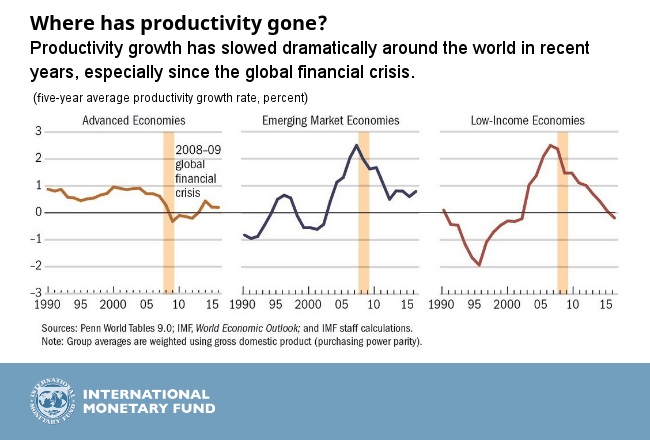Technological change seems to be happening faster than ever. The prospect of driverless cars, robot lawyers, and 3D-printed human organs becoming commonplace suggests a new wave of technological progress.
These advances should raise our standard of living by producing more goods and services with less capital and fewer hours of work—that is, by being more productive. But, to paraphrase Nobel laureate Robert Solow, we can see it everywhere but in the productivity statistics.
The vexing truth is that output per worker and total factor productivity—which measures the overall productivity of both labor and capital, and reflects such elements as technology—have slowed sharply over the past decade.
What is going on? Some believe that aging populations in advanced economies has gradually become a drag on productivity. Others blame a fading information and communications technology boom. And the global financial crisis has played a decisive role, say the authors of Gone with the Headwinds: Global Productivity, an IMF paper due out on April 3.

Read more about why productivity is falling and what can be done about it in the March issue of Finance and Development:
Stuck in a Rut by Gustavo Adler and Romain Duval
Also watch this space for the April release of their IMF Staff Discussion Note.
*****




